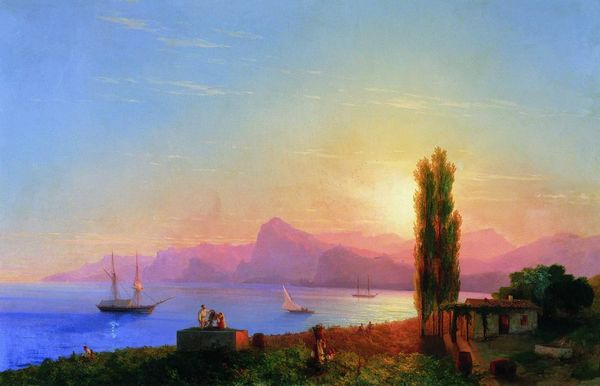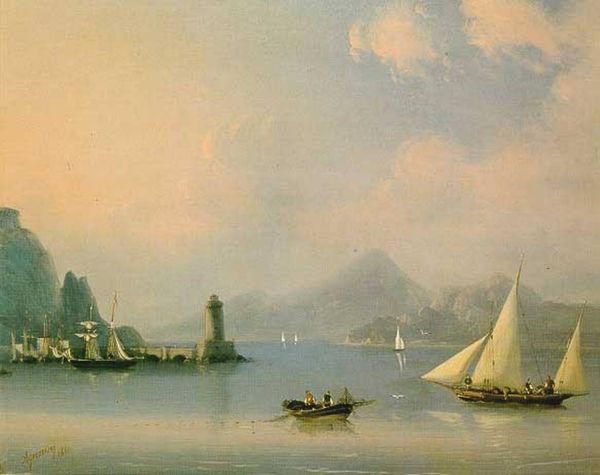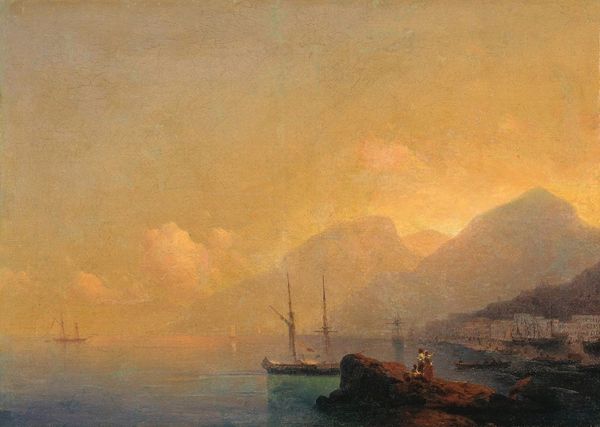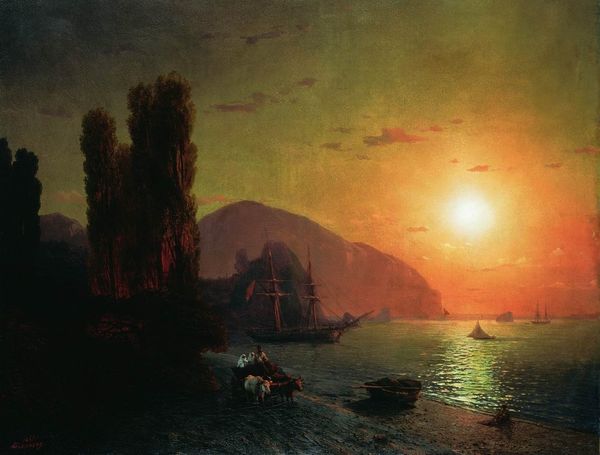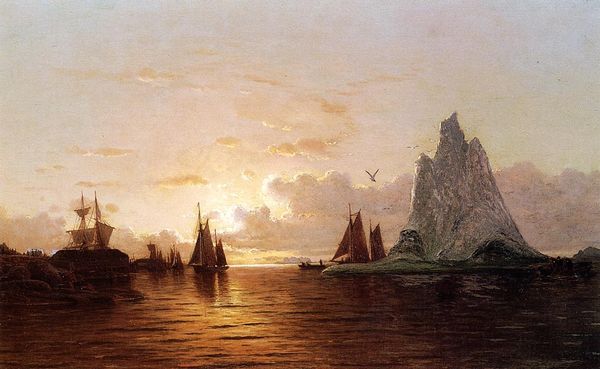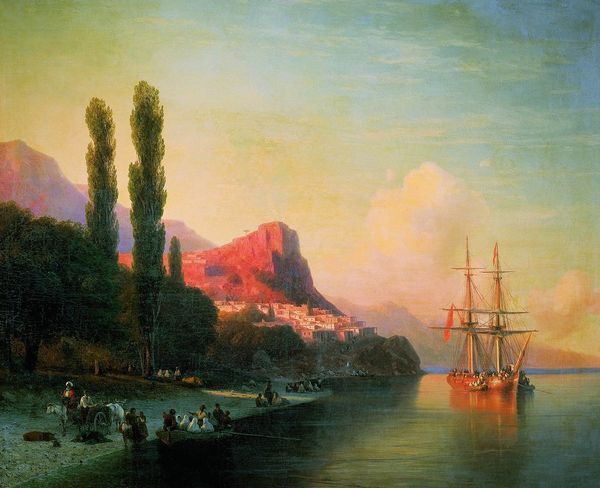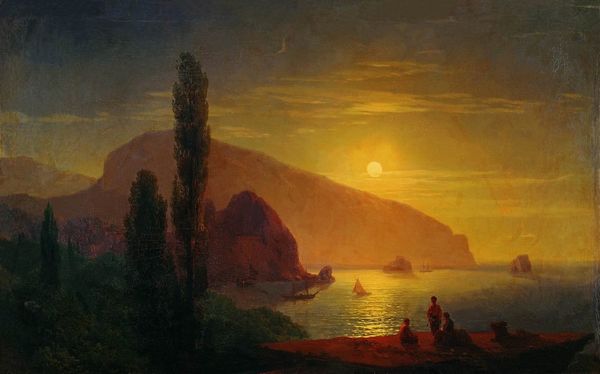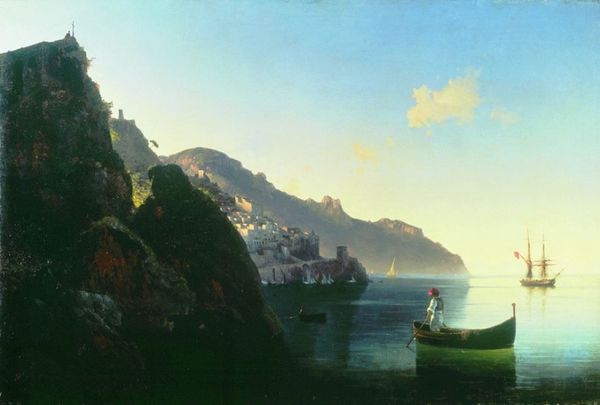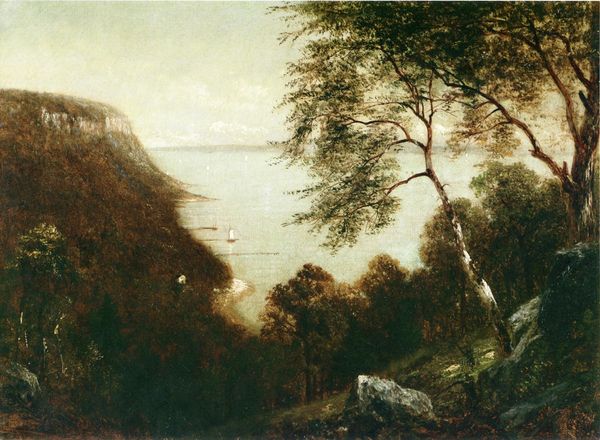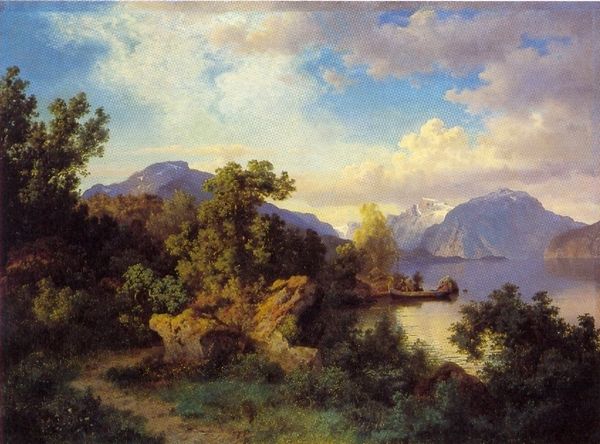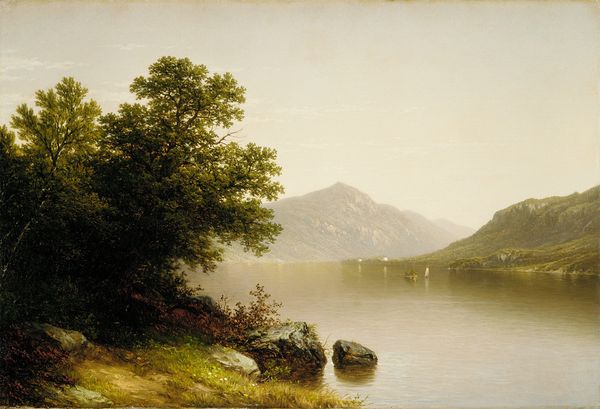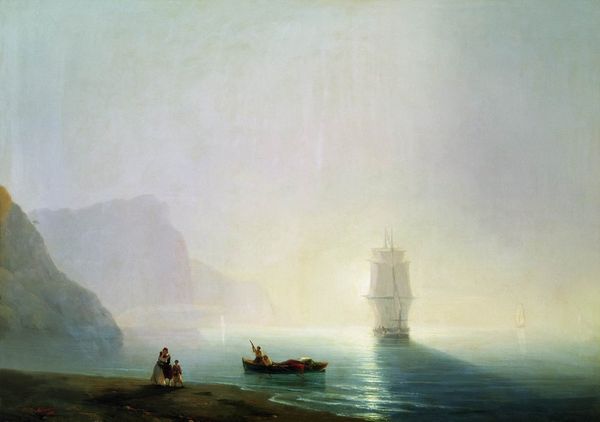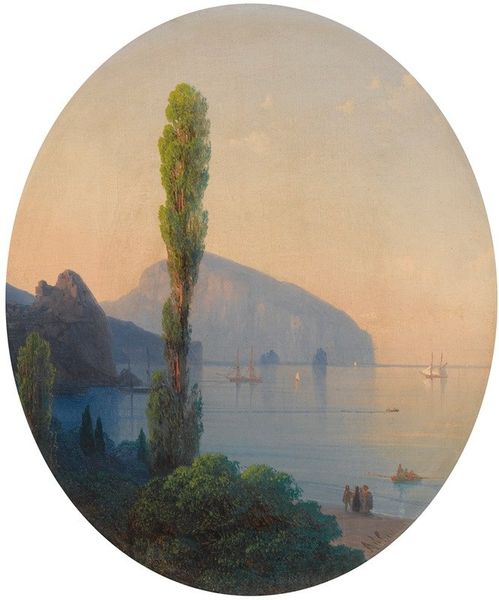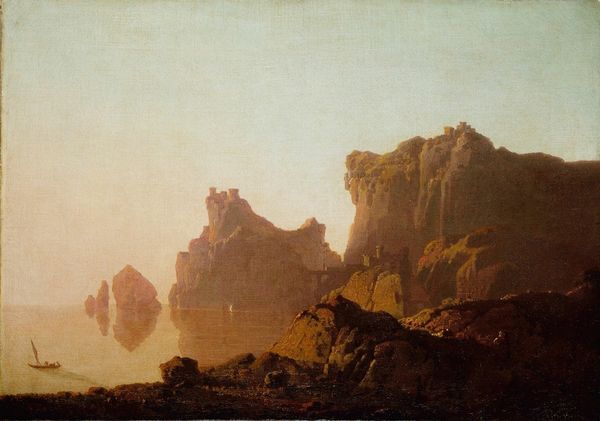
Copyright: Public domain
Editor: So here we have Aivazovsky's "View of Sudak Bay" from 1879, rendered in oil paint. I’m struck by the hazy, almost dreamlike quality of the scene. The light seems to soften everything. What captures your attention in this piece? Curator: For me, this work highlights Aivazovsky’s role in constructing a specific image of Crimea within the Russian imperial project. Consider how the painting presents a romanticized, almost idealized view. How does that connect to Russia's territorial ambitions and cultural identity at the time? Editor: I hadn't considered it that way. I was just thinking about how pretty it is! So the soft light, the idyllic setting... that’s not just aesthetics, it's... propaganda? Curator: It’s more nuanced than pure propaganda. Think of it as visual rhetoric. Aivazovsky was hugely popular and he’s subtly shaping the viewer's perception of the Crimean landscape as inherently peaceful, beautiful, and therefore, rightfully Russian. Do you see any elements in the composition that support this idea? Editor: Well, the tiny human figure, almost hidden. And the ships, appearing so tranquil… Maybe that lack of visible conflict contributes? Curator: Exactly. It downplays the historical struggles and complexities of the region, presenting a harmonious vision instead. The painting becomes a statement about power and belonging. Aivazovsky, through his art, helped create and reinforce this vision. Editor: This gives me a totally different perspective on landscape painting. I guess I’ll be more cautious about assuming an artist’s intention next time. Curator: That's the beauty of art history. It allows us to peel back the layers and see art as deeply embedded in socio-political contexts. Editor: Thanks, that’s something to reflect on! I'm really glad to have understood a different approach of analyzing art today.
Comments
No comments
Be the first to comment and join the conversation on the ultimate creative platform.
